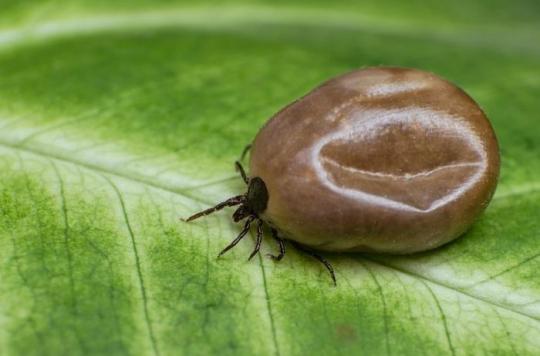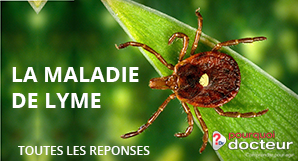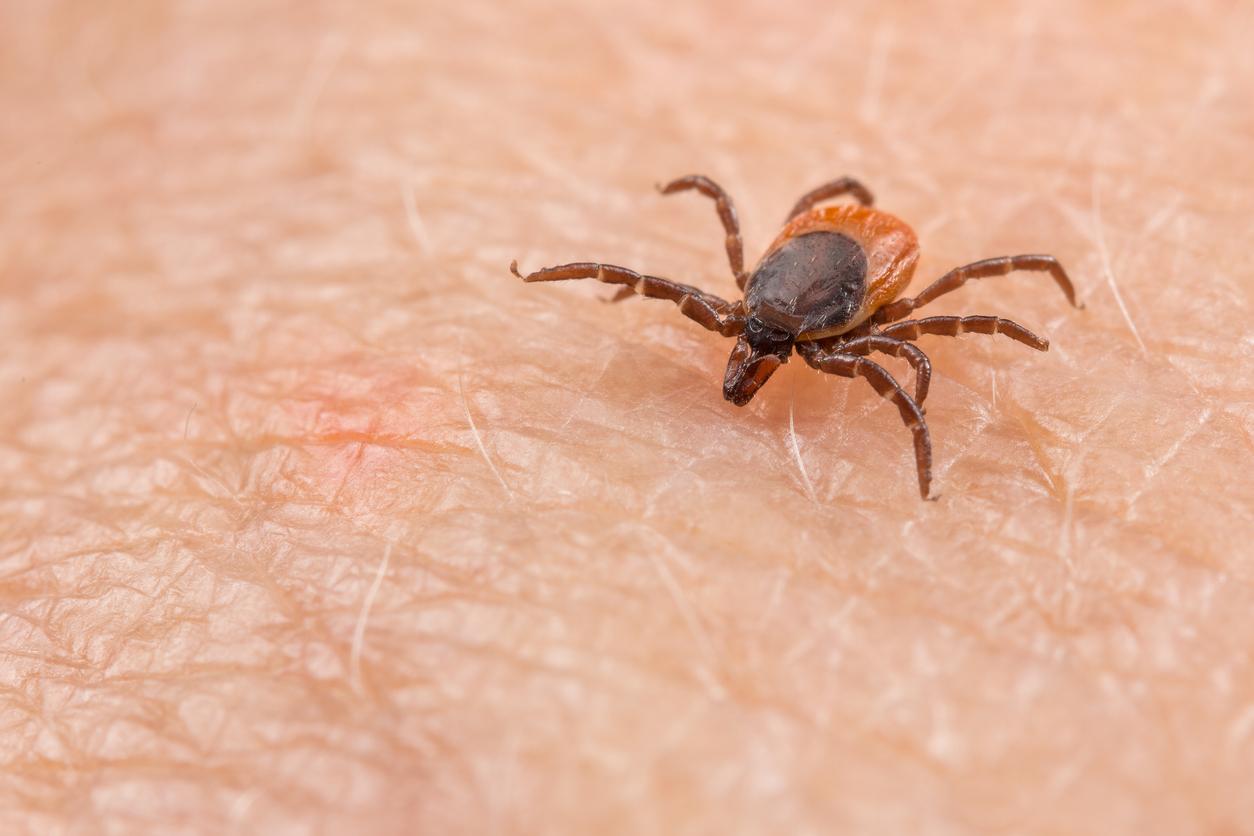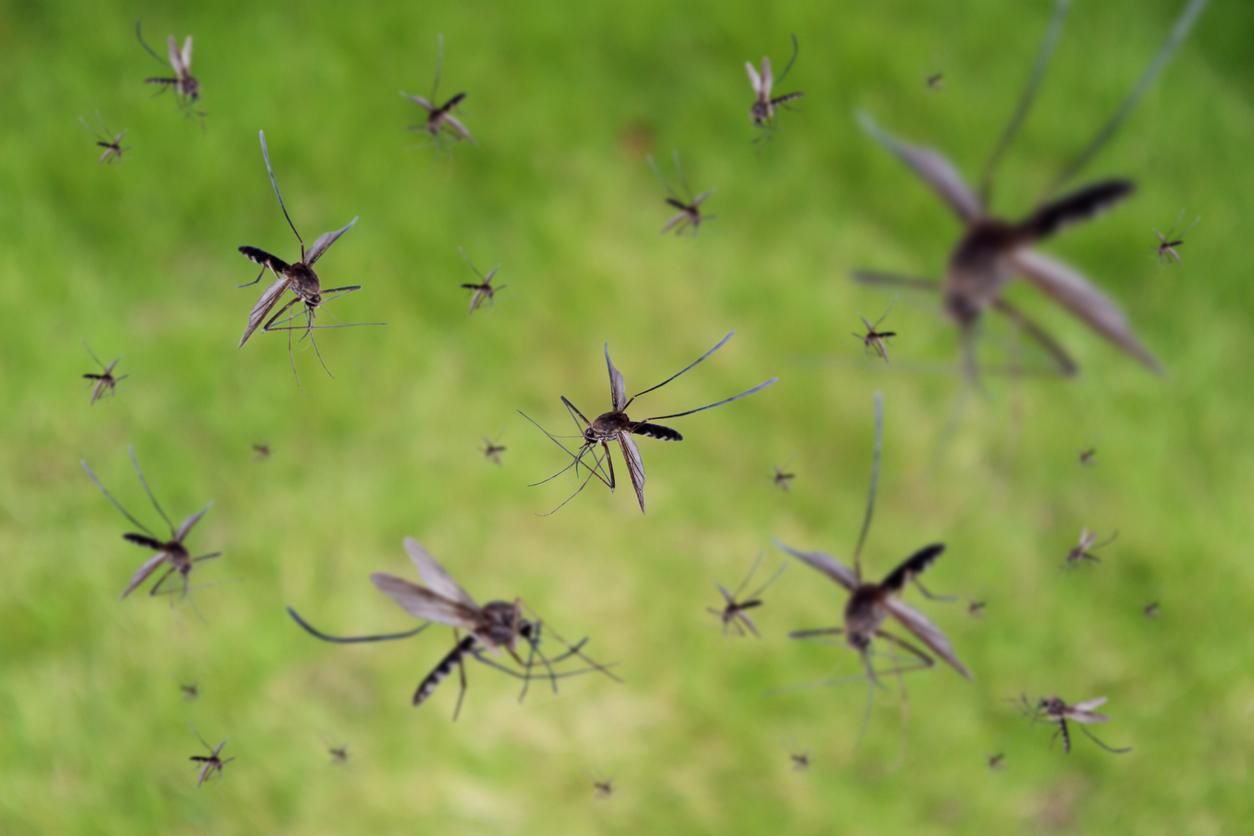The “Tick Signaling” application, intended for the general public, makes it possible to gradually draw a map of France of the implantation of ticks and the diseases they carry, including lyme disease.

Thanks to the general public smartphone application “Signalement Tique”, launched last summer by INRA, we now know that one in three people say they have been bitten in their garden.
The infographic-assessment of the CiTIQUE project since its launch in July 2017 (number of reports via the “Tick Report” smartphone application, ticks sent, location of bites) https://t.co/kX1tLGK6Am pic.twitter.com/AMLn0Oixob
— CiTIC (@ci_ticks) May 26, 2018
“These are data that cannot be collected in any other way”
The National Institute of Agronomic Research collected 5,000 reports and received 1,000 ticks in ten months. A real success, which improves knowledge and prevention of Lyme disease. “These are data that cannot be collected in any other way” summarizes Jean-François Cosson, veterinarian and specialist in health ecology at INRA (National Institute for Agronomic Research) at Maison-Alfort (94).
With the “Tick Report” application, people bitten or owners of bitten animals can fill out a small form (date, place of the bite, type of environment: forest, meadow, garden, etc.) and attach a photo of the insect after removing it with a tick tweezer.The critters are then analyzed by INRA to see if they are carriers of Lyme disease or other bacteria.
The East of France is the subject of numerous reports of bites
The final results of this major study will only be known in several years, but INRA has nevertheless put some data online. Eastern France, particularly the Alps where hiking is practiced, are the subject of numerous reports of bites. In addition, one in three people say they have been bitten in their garden.
This morning, Jean-Jacques Orfeuvre, vice-president of the Haute-Loire Nature Ecology Network (REN 43), also drew attention to the important role that foxes play in the fight against Lyme disease. “Foxes eat voles and mole rats on which ticks live that can become infected,” he explains. Their presence also limits the movements of rodents, which thus catch fewer ticks.
However, “Each year, 4,500 foxes are killed in hunting action in Haute-Loire”, deplores Jean-Jacques Orfeuvre.
An infectious disease
Lyme disease is an infectious disease, secondary to the transmission of a bacterium during a tick bite. The French authorities recognize around 30,000 new cases each year. Lhe average prevalence has been estimated at 43 cases per 100,000 inhabitants since 2009. For comparison, it was 16.5 cases per 100,000 people between 1999 and 2000 and 9.4 cases per 100,000 people from 1988 to 1989, according to Public Health France. In 2016, the estimated annual incidence rate also increased compared to 2015, from 51 cases/100,000 to 84 cases/100,000.
Remembering this constant increase in the number of cases is important since we are precisely at the period of maximum activity of these parasites. They are found en masse in wooded and humid areas, tall prairie grasses, gardens, forest or urban parks, or even on animals (domestic or wild). “Human contaminations are more frequent during the period of maximum tick activity, in France between the beginning of spring and the end of autumn”, alerts the Ministry of Health.
Ticks are naturally not infected, but become contaminated by feeding on the blood of infected wild animals. They don’t travel far on their own either. However, the spread of ticks by different vectors (rodents, migratory birds, domestic animals) makes it possible to be bitten outside of woods and natural areas. For example, they can stick to migrating birds and fall far from their original location.
Lyme disease
Lyme disease can appear within 30 days after the bite, first as a round, red patch that extends in a circle (erythema migrans) from the bite area. The lesion of the skin can be accompanied by muscle and joint pain, or fever. With early treatment, it disappears in a few weeks to a few months. “The symptoms are multiple: joint pain, tremors and neurological disorders – memory loss, depression,” explained Eric Oden to France 3 Nouvelle-Aquitaine.
In the absence of treatment, progression to the secondary phase is not systematic, but worsens the prognosis:infection can become chronic and spread from the skin to the whole body. She will then give complications which can affect several organs (joints, brain, heart, etc.). “Months to years after the infection may appear tertiary manifestations, of joint, cutaneous, neurological, muscular, or cardiac type”, recalls the Ministry of Health.
Recognized for the first time as an occupational pathology
The people most at risk are professionals working in the forest (foresters, loggers, forest wardens, etc.), and those who go there for their leisure: hunters, golfers, fishermen, mushroom pickers, hikers, campers or Sunday walkers again.
After several months of procedure, thehe Social Security Court of Guéret (Creuse) has recognized Eric Oden’s Lyme disease as an occupational pathology. A first in France. The agricultural social mutuality (MSA), which had refused his request for compensation, was ordered by the court to pay him 1200 euros.
This forest technician at the Creuse hunting federation has had Lyme disease for 4 years, in particular because his job requires him to be in regular contact with animals carrying ticks. “The symptoms are multiple: joint pain, tremors and neurological disorders – memory loss, depression,” he explains to France 3 Nouvelle-Aquitaine. According to him, this court decision demonstrates “that the chronic disease exists. We need to evolve on the care in France. It becomes catastrophic”, he believes.
How to reduce the presence of ticks near your house?
It is important to protect yourself against tick bites, in particular by wearing light-coloured clothing in order to distinguish them more easily on the fabric, closed shoes, trousers, covering your head and favoring open paths rather than high ones. herbs. Remember to carefully inspect each person after a risky ride, as well as pets.
To prevent ticks from establishing themselves around dwelling houses (if they are located near a wild area or a wood), it is advisable to regularly mow the lawn and maintain the yard. It is also necessary to remove dead leaves, brush and weeds from the edge of the lawn and near stone walls. Rodent activity should be prevented by cleaning and sealing stone walls and small openings around the house.
Keep pets, especially dogs, out of the woods and put tick repellents on pets if necessary. Children’s swings and sandboxes should be located away from wooded areas. The same is true for wood reserves. Stone or concrete terraces are preferred in endemic areas.
What to do if bitten ?
If you have been bitten, it is urgent to quickly remove the tick, if possible within 12 to 36 hours of the bite. A tick remover (sold in pharmacies) is essential to remove it by grasping it in the direction of the axis of its body (in order to remove the whole body) and rotating it counterclockwise. .

Credit: andriano_cz/iStock
This gesture must be carried out with delicacy so that the tick does not vomit under your skin the possible bacteria which it carries. Do not hesitate to use a magnifying glass and disinfect the area once the tick has been removed. You will still need to monitor the bite for a month to make sure that a red patch does not develop on it. If so, see a doctor quickly.
For more information, you can also consult:
The website of the Ministry of Health
http://www.sante.gouv.fr/malady-de-lyme.html
The website of the France Lyme association
http://francelyme.fr/

.

















